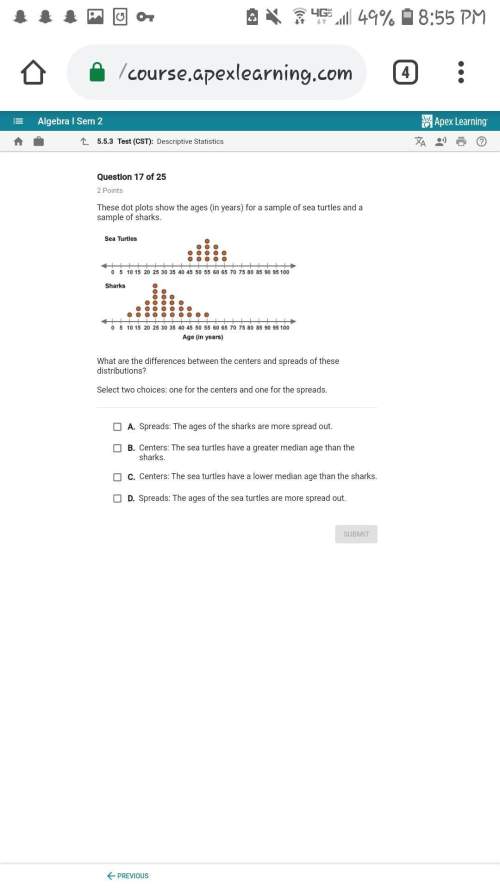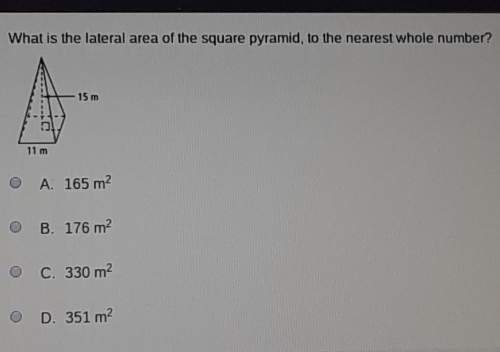
Mathematics, 12.04.2021 22:20 jahzz
A two-factor ANOvA: the null hypotheses, interpretation, and assumptions A fourth-grade teacher suspects that the time he administers a test, and what sort of snack his students ha before the test, affects their performance. To test his theory, he assigns 90 fourth-grade students to one of three groups. One group gets candy (gummy bears) for their 9 AM snack. Another group gets a high-protein snack (a hardboiled egg) for their 9:ss AM snack. The third group does not get a 9:5s AM snack. The teacher also randomly assigns 10 of the students in each snack group to take the test at three different times: 10:00 AM (right after snack), 11:00 AM (an hour after snack), and 12:00 PM (right before lunch
suppose that the teacher uses a two-factor, independent-measures ANOVA to analyze these data. Without post hoc tests, which of the following questions can be answered by this analysis?
Check all that apply. Note: Assume that receiving snack is considered one type of snack.)
a. Does the effect of the timing of the test depend on the type of snack the students eat?
b. Does the effect of the type of snack depend on the timing of the test?
c. Is there a difference among the scores for the snack types because a candy snack increases the students' level of happiness, which causes them to exert more effort on the test?
d. Does the type of snack (or lack of snack) affect student performance on the test?

Answers: 3


Other questions on the subject: Mathematics

Mathematics, 21.06.2019 14:10, mbatton879
5500 dollars is placed in an account with an annual interest rate of 6.5%. to the nearest tenth of a year, how long will it take for the account value to reach 19700 dollars?
Answers: 2

Mathematics, 21.06.2019 15:30, davidchafin59245
Planning for the possibility that your home might get struck by lighting and catch on fire is part of a plan for ?
Answers: 1

Mathematics, 21.06.2019 16:00, lidsrays
Select the correct answer. joshua likes to read. he read 6 books when he was 6 years old. every year he doubled the number of books he read the previous year. how many total books did he read between the ages of 6 and 10? a. 60 b. 90 c.186 d.187
Answers: 1

Mathematics, 21.06.2019 16:30, alexcuevaz90
Why do interests rates on loans to be lower in a weak economy than in a strong one
Answers: 3
You know the right answer?
A two-factor ANOvA: the null hypotheses, interpretation, and assumptions A fourth-grade teacher susp...
Questions in other subjects:





Mathematics, 12.11.2020 07:30


Mathematics, 12.11.2020 07:30


English, 12.11.2020 07:30






